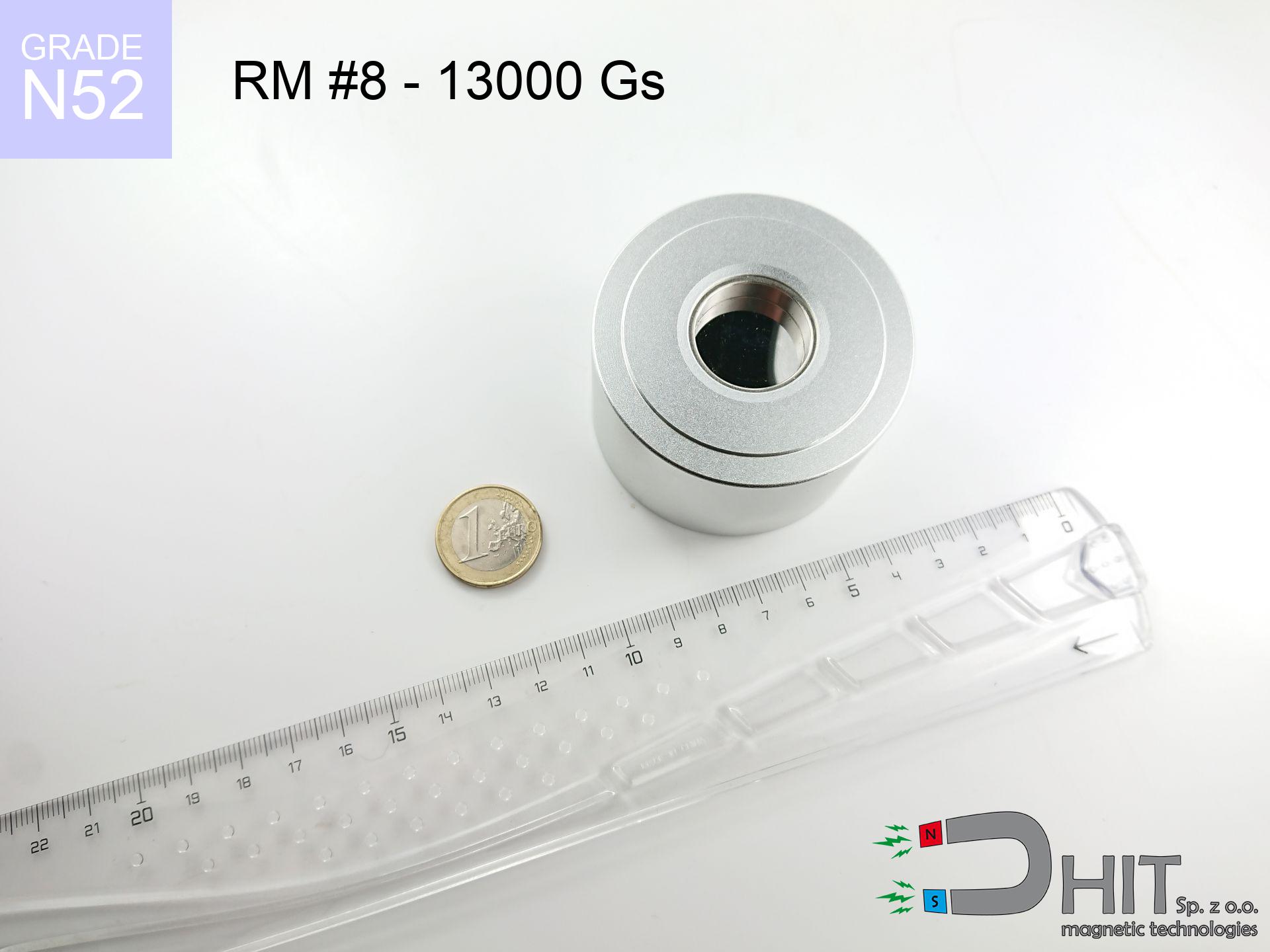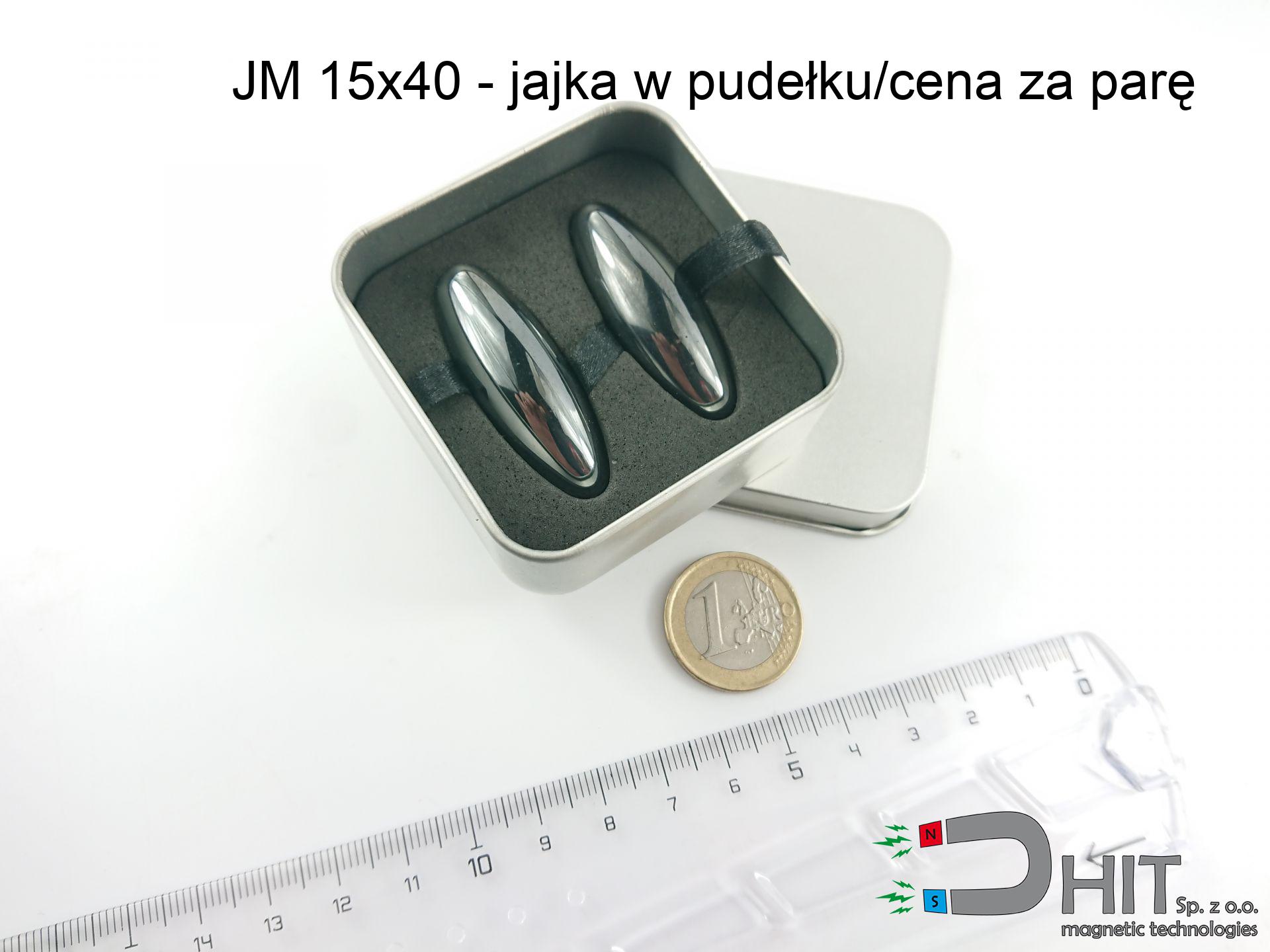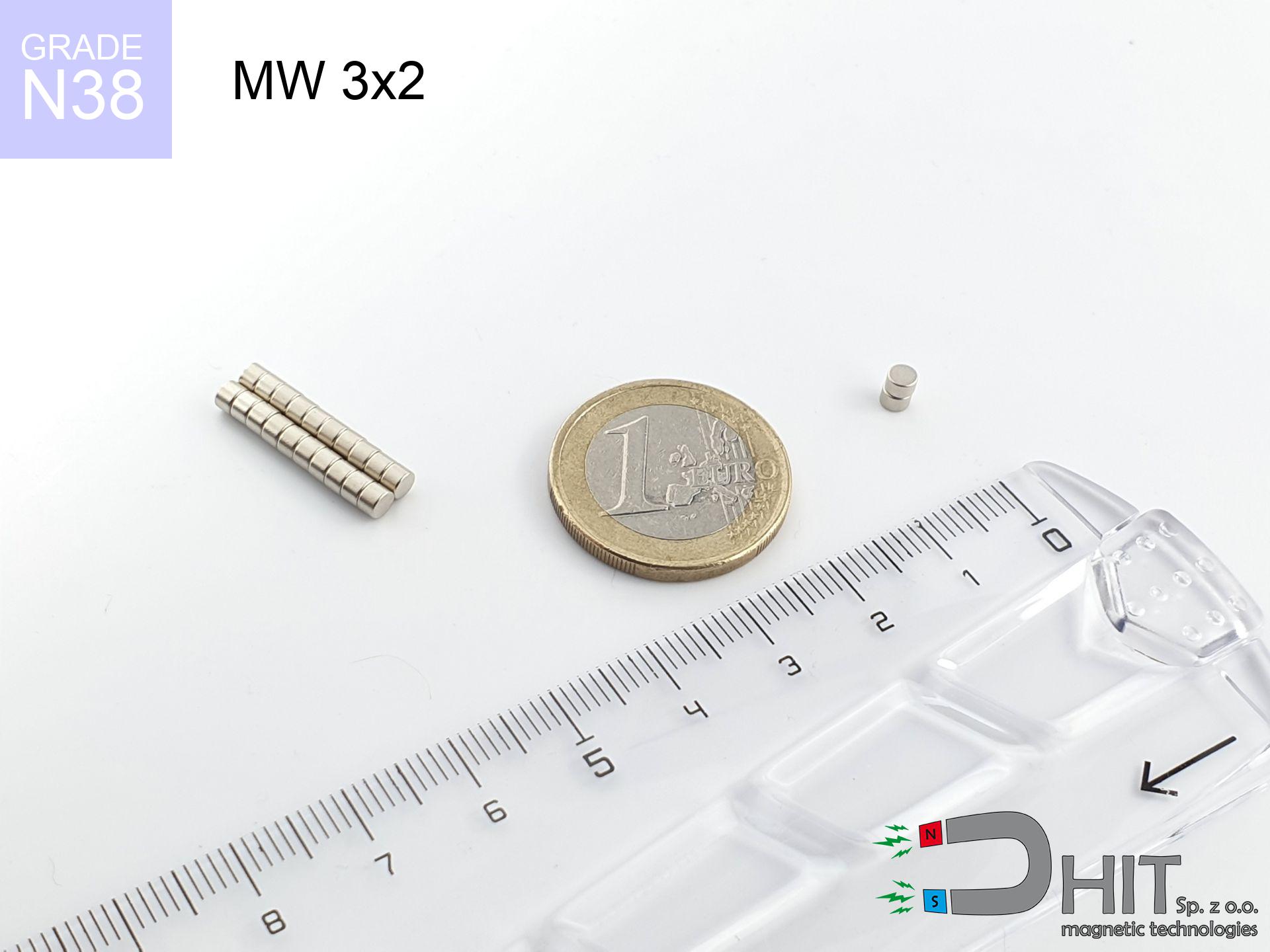RM R8 ULTRA - 13000 Gs / N52 - magnetic distributor
magnetic distributor
Catalog no 280400
GTIN/EAN: 5906301814498
Weight
382 g
Magnetization Direction
↑ axial
Coating
[NiCuNi] Nickel
200.00 ZŁ with VAT / pcs + price for transport
162.60 ZŁ net + 23% VAT / pcs
bulk discounts:
Need more?Hunting for a discount?
Contact us by phone
+48 888 99 98 98
otherwise let us know by means of
contact form
the contact section.
Strength and form of a neodymium magnet can be verified using our
modular calculator.
Orders submitted before 14:00 will be dispatched today!
RM R8 ULTRA - 13000 Gs / N52 - magnetic distributor
Specification / characteristics RM R8 ULTRA - 13000 Gs / N52 - magnetic distributor
| properties | values |
|---|---|
| Cat. no. | 280400 |
| GTIN/EAN | 5906301814498 |
| Production/Distribution | Dhit sp. z o.o. |
| Country of origin | Poland / China / Germany |
| Customs code | 85059029 |
| Weight | 382 g |
| Magnetization Direction | ↑ axial |
| Coating | [NiCuNi] Nickel |
| Manufacturing Tolerance | ±1 mm |
Magnetic properties of material N52
| properties | values | units |
|---|---|---|
| remenance Br [min. - max.] ? | 14.2-14.7 | kGs |
| remenance Br [min. - max.] ? | 1420-1470 | mT |
| coercivity bHc ? | 10.8-12.5 | kOe |
| coercivity bHc ? | 860-995 | kA/m |
| actual internal force iHc | ≥ 12 | kOe |
| actual internal force iHc | ≥ 955 | kA/m |
| energy density [min. - max.] ? | 48-53 | BH max MGOe |
| energy density [min. - max.] ? | 380-422 | BH max KJ/m |
| max. temperature ? | ≤ 80 | °C |
Physical properties of sintered neodymium magnets Nd2Fe14B at 20°C
| properties | values | units |
|---|---|---|
| Vickers hardness | ≥550 | Hv |
| Density | ≥7.4 | g/cm3 |
| Curie Temperature TC | 312 - 380 | °C |
| Curie Temperature TF | 593 - 716 | °F |
| Specific resistance | 150 | μΩ⋅cm |
| Bending strength | 250 | MPa |
| Compressive strength | 1000~1100 | MPa |
| Thermal expansion parallel (∥) to orientation (M) | (3-4) x 10-6 | °C-1 |
| Thermal expansion perpendicular (⊥) to orientation (M) | -(1-3) x 10-6 | °C-1 |
| Young's modulus | 1.7 x 104 | kg/mm² |
Elemental analysis
| iron (Fe) | 64% – 68% |
| neodymium (Nd) | 29% – 32% |
| boron (B) | 1.1% – 1.2% |
| dysprosium (Dy) | 0.5% – 2.0% |
| coating (Ni-Cu-Ni) | < 0.05% |
Environmental data
| recyclability (EoL) | 100% |
| recycled raw materials | ~10% (pre-cons) |
| carbon footprint | low / zredukowany |
| waste code (EWC) | 16 02 16 |
Other deals
Pros as well as cons of neodymium magnets.
Benefits
- Their strength is maintained, and after approximately 10 years it decreases only by ~1% (according to research),
- They retain their magnetic properties even under strong external field,
- Thanks to the shimmering finish, the plating of nickel, gold, or silver gives an elegant appearance,
- Magnets are distinguished by very high magnetic induction on the outer layer,
- Thanks to resistance to high temperature, they are able to function (depending on the form) even at temperatures up to 230°C and higher...
- Thanks to freedom in forming and the capacity to modify to client solutions,
- Wide application in innovative solutions – they find application in mass storage devices, electric drive systems, medical devices, and other advanced devices.
- Relatively small size with high pulling force – neodymium magnets offer strong magnetic field in small dimensions, which enables their usage in miniature devices
Weaknesses
- To avoid cracks under impact, we suggest using special steel holders. Such a solution secures the magnet and simultaneously improves its durability.
- Neodymium magnets decrease their power under the influence of heating. As soon as 80°C is exceeded, many of them start losing their power. Therefore, we recommend our special magnets marked [AH], which maintain durability even at temperatures up to 230°C
- Due to the susceptibility of magnets to corrosion in a humid environment, we suggest using waterproof magnets made of rubber, plastic or other material immune to moisture, when using outdoors
- Limited ability of creating threads in the magnet and complicated shapes - recommended is a housing - magnet mounting.
- Possible danger resulting from small fragments of magnets can be dangerous, in case of ingestion, which is particularly important in the aspect of protecting the youngest. It is also worth noting that small elements of these devices are able to complicate diagnosis medical in case of swallowing.
- High unit price – neodymium magnets are more expensive than other types of magnets (e.g. ferrite), which can limit application in large quantities
Holding force characteristics
Optimal lifting capacity of a neodymium magnet – what contributes to it?
- with the use of a sheet made of low-carbon steel, guaranteeing maximum field concentration
- whose transverse dimension equals approx. 10 mm
- with a plane perfectly flat
- under conditions of gap-free contact (surface-to-surface)
- for force acting at a right angle (pull-off, not shear)
- at conditions approx. 20°C
Practical aspects of lifting capacity – factors
- Space between surfaces – even a fraction of a millimeter of separation (caused e.g. by veneer or dirt) diminishes the pulling force, often by half at just 0.5 mm.
- Direction of force – highest force is available only during pulling at a 90° angle. The shear force of the magnet along the surface is typically many times lower (approx. 1/5 of the lifting capacity).
- Substrate thickness – to utilize 100% power, the steel must be sufficiently thick. Paper-thin metal restricts the lifting capacity (the magnet "punches through" it).
- Steel grade – the best choice is high-permeability steel. Hardened steels may generate lower lifting capacity.
- Surface structure – the more even the plate, the larger the contact zone and stronger the hold. Unevenness creates an air distance.
- Temperature – heating the magnet results in weakening of induction. Check the thermal limit for a given model.
Lifting capacity testing was conducted on a smooth plate of suitable thickness, under a perpendicular pulling force, in contrast under shearing force the load capacity is reduced by as much as 75%. In addition, even a slight gap between the magnet and the plate reduces the load capacity.
Threat to navigation
A powerful magnetic field disrupts the functioning of compasses in phones and navigation systems. Keep magnets near a smartphone to prevent damaging the sensors.
Allergy Warning
Nickel alert: The Ni-Cu-Ni coating consists of nickel. If redness appears, cease handling magnets and wear gloves.
Keep away from computers
Equipment safety: Strong magnets can ruin data carriers and delicate electronics (heart implants, hearing aids, timepieces).
Dust explosion hazard
Dust produced during grinding of magnets is flammable. Avoid drilling into magnets unless you are an expert.
Magnet fragility
Despite metallic appearance, the material is brittle and not impact-resistant. Avoid impacts, as the magnet may shatter into hazardous fragments.
This is not a toy
NdFeB magnets are not suitable for play. Swallowing multiple magnets can lead to them attracting across intestines, which constitutes a severe health hazard and requires urgent medical intervention.
Finger safety
Risk of injury: The pulling power is so immense that it can cause hematomas, crushing, and broken bones. Use thick gloves.
Health Danger
People with a heart stimulator should maintain an safe separation from magnets. The magnetic field can stop the operation of the implant.
Immense force
Handle magnets with awareness. Their huge power can shock even experienced users. Plan your moves and do not underestimate their force.
Heat warning
Do not overheat. NdFeB magnets are susceptible to heat. If you need operation above 80°C, look for special high-temperature series (H, SH, UH).




![AM ucho [M12] - magnetic accessories AM ucho [M12] - magnetic accessories](https://cdn3.dhit.pl/graphics/products/am-ucho-m12-maz.jpg)

![SM 19x225 [2xM6] / N50 - magnetic separator SM 19x225 [2xM6] / N50 - magnetic separator](https://cdn3.dhit.pl/graphics/products/sm-19x225-2xm6-jis.jpg)

